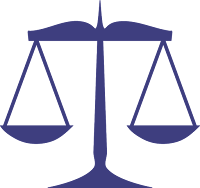Posts
Showing posts with the label heavier
Fake Vs Genuine Coin Weigh Comparison
- Get link
- X
- Other Apps
This was the challenge!
Remember we are asked to determine whether the fake coin is lighter or heavier when compared with the genuine coin and not to identify the fake coin itself.
Keep aside any one coin. Divide remaining 100 coins into 2 groups of 50 coins each. Put these 2 groups on 2 pans of the balance.
1. If they weigh equal the the coin that is kept aside is fake. Weigh it against any genuine among 100 coins to know whether fake coin is lighter or heavier than genuine.
2. If they are not equal then that means the fake coin either made one side heavier or the other side lighter.
3. Take the heavier group of 50 coins for the next test. Divide them into 2 groups of 25 coins each.
4. Put 25 - 25 coins on weighing balance. If they weigh equal then that means no fake coin among them which also means the fake coin was in the other group of 50 coins which was lighter in the first weighing.
Hence, the fake coin is lighter present in the other group of 50 coins making the group slightly lighter compared to group of 50 genuine coins.
4.1. And if the result of weighing 25 - 25 coins is unequal then it's clear that the fake coin is among these 50 coins. Also, it must be heavier making this group to weigh more than the other group of 50 genuine coins in the first weighing.
This way, we can determine whether the fake coin is heavier or lighter than genuine one using the weighing balance only twice.
Find The Heaviest Ball
- Get link
- X
- Other Apps
Given 27 table tennis balls, one is heavier than the others.
What is the minimum number of weighings (using a two-pan balance scale) needed to guarantee identifying the heavy one? The other 26 balls weigh the same.
Here is how to identify the heavier ball.
What is the minimum number of weighings (using a two-pan balance scale) needed to guarantee identifying the heavy one? The other 26 balls weigh the same.
Here is how to identify the heavier ball.
Identifying The Heavier Ball
- Get link
- X
- Other Apps
What was the task given?
We need to use the scale only 3 times.
1. Divide the 27 balls into 3 groups of 9 balls each.
2. Use the scale to weigh 2 groups. This will tell us which group has the heavier ball.
If the scale is balanced then third group must be having heavier ball
3. Now, divide the 9 balls into 3 groups of 3 balls each and weigh 2 groups, and identify the group which has the heavier ball. Again, if the scale is balanced then the third group must be having the heavier ball.
4. From the heavier group, weigh 2 balls to determine the heavier ball. And, if the scale is balanced then the third ball must be heavier.
Distinguish The Fake Coin
- Get link
- X
- Other Apps
You have twelve coins. You know that one is fake. The only thing that
distinguishes the fake coin from the real coins is that its weight is
imperceptibly different. You have a perfectly balanced scale. The scale
only tells you which side weighs more than the other side.
What is the smallest number of times you must use the scale in order to always find the fake coin?
Use only the twelve coins themselves and no others, no other weights, no cutting coins, no pencil marks on the scale. etc.
These are modern coins, so the fake coin is not necessarily lighter.
Presume the worst case scenario and don't hope that you will pick the right coin on the first attempt.
Process to identify the fake one!
Source
What is the smallest number of times you must use the scale in order to always find the fake coin?
Use only the twelve coins themselves and no others, no other weights, no cutting coins, no pencil marks on the scale. etc.
These are modern coins, so the fake coin is not necessarily lighter.
Presume the worst case scenario and don't hope that you will pick the right coin on the first attempt.
Process to identify the fake one!
Source
Process To Identify Fake Coin
- Get link
- X
- Other Apps
What was the task given?
If we knew, the fake coin is lighter or heavier than original one then the process would have been pretty simple like this! But we don't know.
Let's number the coins from 1 to 12. We'll make 3 groups of these coins as 1,2,3,4 in one group, 5,6,7,8 in other group and 9,10,11,12 in one more group.
First of all weigh 1,2,3,4 against 5,6,7,8.
CASE 1 : 1,2,3,4 = 5,6,7,8
That means coin among 9,10,11,12 is fake one. So weigh 9,10 against 11,8.
CASE 1.1 : If 9,10 = 11,8 then 12 is fake coin.
CASE 1.2 : If 9,10 > 11,8 then either 9 or 10 is heavier (hence fake) or 11 is lighter (hence fake). Weigh 9 against 10. If they balance then 11 is fake one. If they don't then heavier of 9 & 10 is fake.
CASE 1.3 : If 9,10 < 11,8 then either 9 or 10 is lighter (hence fake) or 11 is heavier (hence fake). Weigh 9 against 10. If they balance then 11 is fake one. If they don't then lighter of 9 & 10 is fake.





